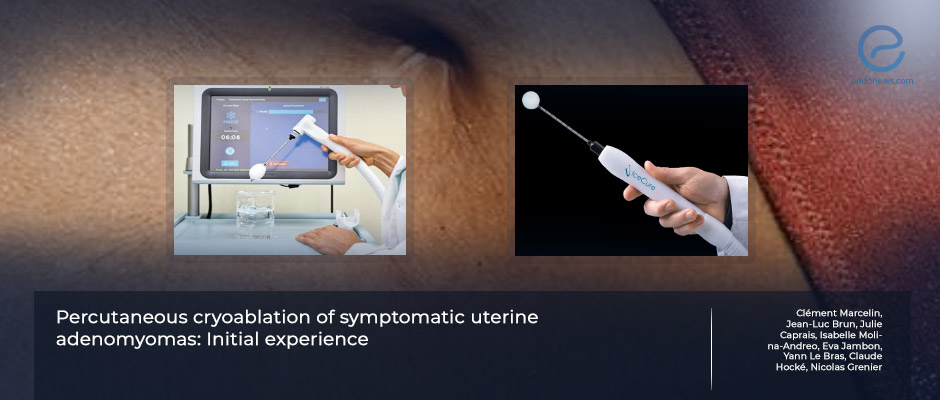Management of uterine adenomyomas with percutaneous cryoablation.
Mar 7, 2024
Cryoablation may be a promising alternative treatment for adenomyomas while preserving the uterus.
Key Points
Importance
- Since percutaneous cryoablation of abdominal wall endometriosis provided an effective alternative therapy, it could be applied to adenomyosis as well.
Highlights:
- The technical success is more significant than that of other alternative procedures aiming to reduce the volume of adenomyomas, such as radiofrequency, high-intensity ultrasound, and microwaves.
- After cryotherapy of adenomyomas, all patients reported relief of pelvic pain, dysmenorrhea, and dyspareunia.
What's done here:
- This study was performed in a tertiary hospital in Bordeaux, France, as single-center prospective research.
- Five patients diagnosed with symptomatic adenomyosis by US and MRI underwent percutaneous cryoablation with laparoscopic guidance.
- Changes in the pain scores, quality of life, and adenomyosis volumes were questioned and followed up yearly.
- No statistical work was done on the results due to the low number of cases; qualitative and quantitative data were presented as median (range).
Key Results:
- Of those five women, 2 were nulliparous, 3 were multiparous, and 3 desired to become pregnant.
- Two patients underwent previous surgery for endometrioma and deep endometriosis. All patients had pelvic pain, dyspareunia, and dysmenorrhea.
- All procedures were successful, and no postoperative complications occurred.
- After a year of follow-up, mean pain scores decreased, and all adenomyomas decreased by at least 40% of their volume.
Lay Summary
Adenomyosis can negatively affect the quality of life by causing abnormal bleeding, pelvic pain, dysmenorrhea, and dyspareunia. It is often associated with endometriomas and/or leiomyomas. Treatment of the disease differs as conservative or radical, as well as pharmacological or surgical. For women with adenomyosis who want to preserve their uterus and fertility, adenomyomectomy is a challenging procedure due to excessive bleeding and a remaining uterine scar afterward.
Ablation of adenomyomas using high-intensity focused US waves, microwaves, and radiofrequency has been performed in recent years. Another method, percutaneous cryoablation, was an effective and well-tolerated procedure for those patients.
Marcelin et al. from the Department of Gynecological Surgery of Pellegrin Hospital, Bordeaux, France, set up a prospective one-center study to assess the efficacy and safety of the percutaneous cryoablation technique to manage adenomyosis. The authors performed the procedure on five patients who had been clinically diagnosed with adenomyosis between 2018 and 2022. The volume, the location, and the characteristics of adenomyosis, as well as the position of the uterus and its proximity relation with the bowels, were evaluated preoperatively. During the percutaneous cryoablation procedure, the US and laparoscope followed the progression and ensured the complete coverage of the target. The researchers aimed to relieve the symptoms of adenomyosis in patients who want to preserve their uterus. They did not have an opportunity to treat the adenomyomas larger than 100 ml. due to larger tumors requiring more than one cryoprobe during the procedure.
Postoperative follow-up of the patients was conducted 3 and 12 months after the procedure, then yearly. The median pain score and dyspareunia scores declined significantly after one year of follow-up. None of the women got pregnant after 22 months of follow-up.
Cryoablation is effective when the cryoprobe covers the lesion with ice. But even so, the lesion cannot disappear completely. "The significant reduction in the volume and improvement of the symptoms is the success of this technique." commented the authors in this recently published study in the Journal of Gynecology Obstetrics and Human Reproduction.
Research Source: https://pubmed.ncbi.nlm.nih.gov/38237806/
cryoablation interventional radiology safety outcome hysterosonography ultrasound laparoscopic guidance uterine adenomyoma endometriosis.

